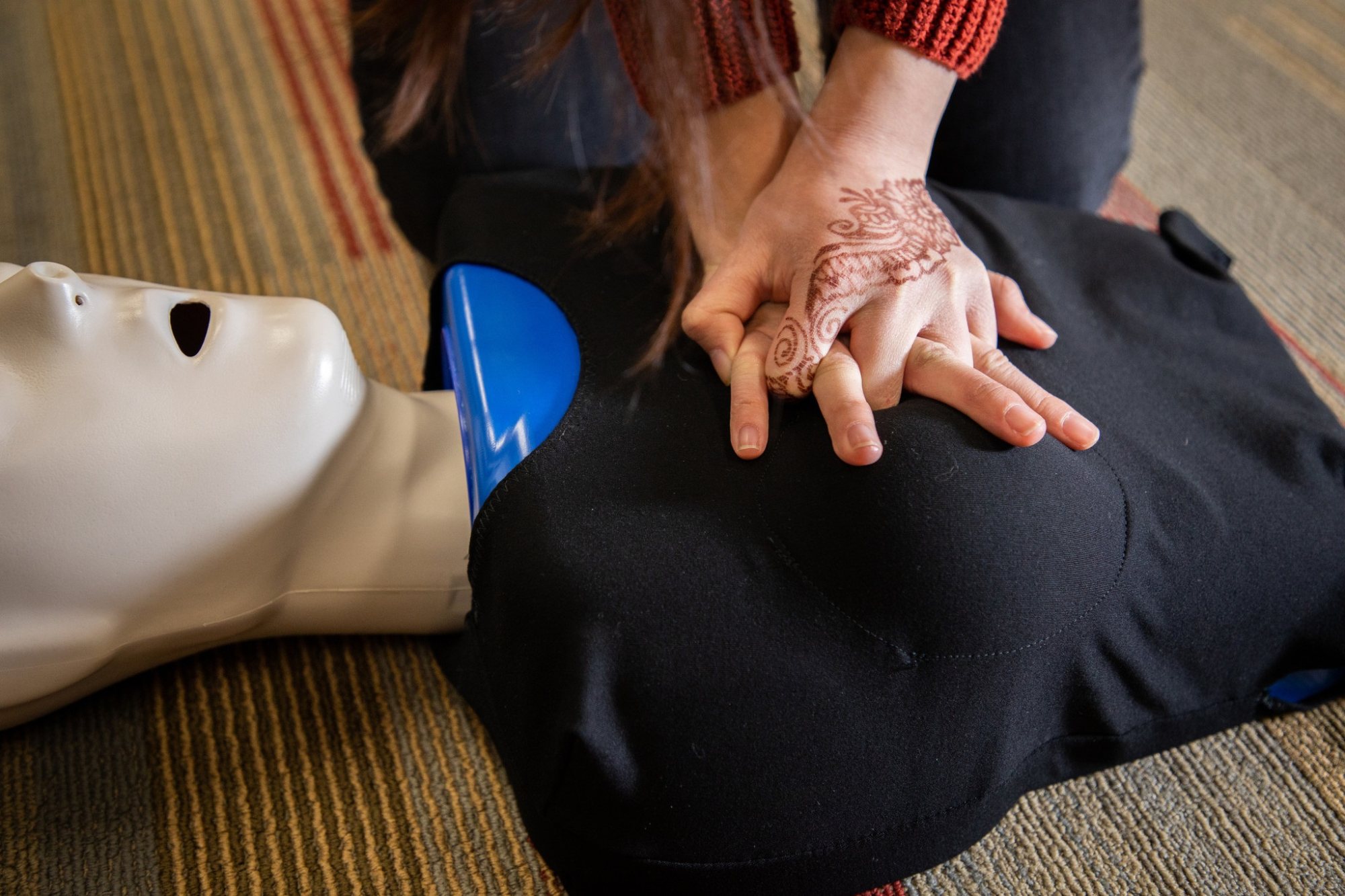
Someone’s having a heart attack; do you know how to give CPR or use an AED? 5 steps that increase a victim’s chances of surviving
- Danish footballer Christian Eriksen’s cardiac arrest mid-match highlighted the importance of speedy action to prevent lasting damage – or worse
- Two Hong Kong doctors describe the steps to save a life, urge people to learn how to use automated external defibrillators, and call for more AEDs in the city
When Denmark midfielder Christian Eriksen suffered a cardiac arrest while playing for his country in soccer’s European Championship last year, it provided one of 2021’s most shocking images.
Only the swift intervention of his team’s captain, Simon Kjaer, and the medical staff saved Eriksen’s life after his collapse during Denmark’s match against Finland in what was an ordeal for all those who witnessed it.
Kjaer cleared his teammate’s airways and start life-saving cardiopulmonary resuscitation (CPR), which was continued with the aid of an automated external defibrillator (AED) and the team’s professional medical staff.
“[Eriksen] was gone,” Denmark’s team doctor Morten Boesen told the media at the time. “We did cardiac resuscitation, it was a cardiac arrest. How close were we to losing him? I don’t know but we got him back after one defib, so that’s quite fast.”

Thankfully, the footballer, aged 29 at the time, has since made a full recovery, and has had a defibrillator implanted to help prevent future cardiac arrests. The CPR he received on the pitch saved his life, and shows how crucial it is to know what to do if someone suffers a heart attack.
We all must understand how to act and how to perform CPR in such a crisis, says Dr Vincent Tsang Chi-yan, consultant cardiologist at the Hong Kong Asia Heart Centre.
Why heart attack survivors need regular physical activity
“Over 80 per cent of cardiac arrests happen at home. Effective bystander CPR provided immediately after sudden cardiac arrest can double or triple a victim’s chance of survival, but only 32 per cent of cardiac arrest victims get CPR from a bystander.”
Dr Jeffrey Fung, a consultant in cardiology at Hong Kong Adventist Hospital in Wan Chai, agrees that anyone who knows CPR and first aid can save lives before the arrival of paramedics, and adds that there are other ways you can help.
“You can monitor the person’s consciousness, breathing and check their pulse. Reassure the patient and tell them to stay calm,” Fung says. “If they are able to speak they also may be able to tell you about their family history or medicine allergy.”

The person may also have medication with them like angina tablets or aspirin to be used in these situations. “Help the patient to put [the angina tablet] underneath their tongue to help relieve the chest tightness and wait for the ambulance,” says Fung.
Both doctors urge people to learn how to use AEDs, and called for more of them to be made available throughout the city.
Tsang believes a promotional campaign to help explain exactly the importance of an AED and how to use it would be beneficial.

“The government should raise the awareness of using AEDs in case of a cardiac arrest, so the public can learn more about them,” he says. “It would be worth considering adding this topic into Liberal Studies in schools, or promoting it using influential pop stars or through advertisements.
“AEDs are important because they strengthen the chain of survival and there should be eye-catching signs in public areas to help people locate them.

Unlike regular defibrillators, an AED requires minimal training to be used (or even no training at all). That is possible because all AEDs – approved for use in many countries – use an electronic voice to prompt users through each step. Many AEDs now include visual prompts as well.
Some Hong Kong transport services already emphasise their importance. AEDs for staff to assist passengers in an emergency are available in stations of the city’s MTR subway network.
“In support of the Hong Kong Fire Services Department’s initiative to encourage the timely use of AEDs to save lives, there are now also additional AEDs in all concourses and platforms for immediate use by passengers. This will mean faster access to an AED in emergency situations where minutes matter and could save lives,” the MTR Corporation said in a statement.
Miracle of the human heart, and how to keep yours healthy
Additional AEDs are available in East Tsim Sha Tsui Station, on the Tseung Kwan O Line, South Island Line, Island Line, Airport Express, Tung Chung Line, Disneyland Resort Line, Tsuen Wan Line and Kwun Tong Line. More are planned for other stations.
How to perform CPR
Here are the five steps to learn when carrying out chest compressions:

1. Place the heel of your hand on the breastbone at the centre of the person’s chest. Place your other hand on top of your first hand and interlock your fingers.
2. Position yourself with your shoulders above your hands.
3. Using your body weight (not just your arms); press straight down by 5cm to 6cm (2 to 2.5 inches) on their chest.

4. Keeping your hands on their chest, release the compression and allow the chest to return to its original position.
5. Repeat these compressions at a rate of 100 to 120 times a minute until an ambulance arrives or you become exhausted.
Always seek professional help: call 999 before starting CPR. The British Heart Foundation recommends that in an emergency situation it is better to try to perform CPR, even if unsure about it, rather than to not do anything at all.

